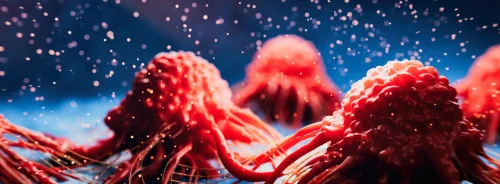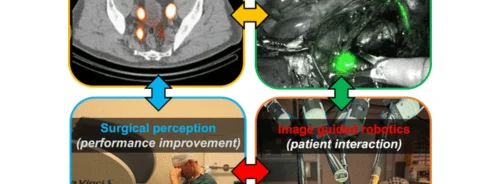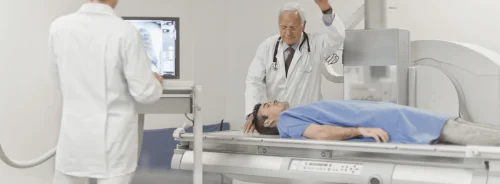In recent years, [18F]-fluorodeoxyglucose ([18F]FDG) positron emission tomography combined with computed tomography (PET/CT) has significantly advanced the fields of oncology and radiology. Its application, particularly in lymphoma patients, has become standard practice for staging and response assessment. Notably, PET/CT's utility in monitoring therapy response in Hodgkin lymphoma (HL) patients allows for a reduction in chemotherapy cycles and minimises toxicity, thus improving patient outcomes. This article delves into the specifics of PET/CT in HL management, the role of metabolic tumour volume (MTV) as a prognostic factor, and the impact of image reconstruction settings on MTV measurements.
The Role of PET/CT in Hodgkin Lymphoma
FDG-PET/CT has revolutionised the approach to staging and therapy response assessment in HL. Traditionally, the evaluation of chemotherapy effectiveness required prolonged treatment cycles, increasing patient exposure to toxic agents. With PET/CT, after just two cycles of eBEACOPP (a combination of Bleomyxin, Etoposide, Doxorubicin, Cyclophosphamide, Vincristine, Procarbazine, and Prednisone in escalated doses), clinicians can determine the need for further chemotherapy. PET-negative patients can safely reduce their chemotherapy from six to four cycles without compromising the cure rate. This optimisation significantly lowers the long-term risks associated with chemotherapy, demonstrating PET/CT's critical role in HL management.
Metabolic Tumour Volume as a Prognostic Factor
Baseline metabolic tumour volume (MTV) measured through [18F]FDG-PET/CT has emerged as a significant prognostic factor in lymphoma staging. Recent studies suggest that incorporating MTV into the staging process can substantially influence clinical decisions. For instance, MTV measurements help predict patient outcomes and guide therapy adjustments. However, for MTV to be reliably integrated into clinical practice, its calculation methods must be consistent and reproducible. Variations in MTV measurements due to different image reconstruction settings could hinder its adoption as a standard prognostic tool.
Impact of PET Image Reconstruction Settings on MTV Measurements
The accuracy of MTV measurements can be affected by the PET image reconstruction method used. In a study involving 40 HL patients, MTVs were measured using two reconstruction settings: point spread function (PSF) combined with time of flight (TOF) algorithm (UHD), and ordered subset expectation maximisation (OSEM). MTV was calculated using both a fixed threshold of 4.0 SUV (MTV4.0) and a relative threshold of 41% of the SUVmax (MTV41%). The findings indicated that MTV4.0 provided more consistent results across different reconstruction settings compared to MTV41%. Specifically, the absolute and relative differences in MTV measurements were significantly smaller when using the fixed threshold method, highlighting its robustness and reliability.
The use of [18F]FDG-PET/CT in managing Hodgkin lymphoma represents a significant advancement in oncology, offering precise staging and effective therapy monitoring. Integrating MTV as a prognostic marker could further refine patient management, provided MTV calculations are standardised and reproducible. The study discussed here confirms that MTV measurements using a fixed SUV of 4.0 are robust across different PET image reconstruction settings. This consistency makes MTV4.0 a promising parameter for both clinical trials and routine practice. Future research should explore the applicability of MTV4.0 in other malignancies, potentially broadening the scope of PET/CT in oncology.
Source & Image Credit: Academic Radiology





![[18F]FDG-PET/CT for Hodgkin Lymphoma Staging & Therapy Monitoring [18F]FDG-PET/CT for Hodgkin Lymphoma Staging & Therapy Monitoring](https://res.cloudinary.com/healthmanagement-org/image/upload/c_thumb,f_auto,fl_lossy,q_90/v1721379158/cw/00127831_cw_image_wi_2efbfdfbf13a43ef6379a43429961907.webp)
